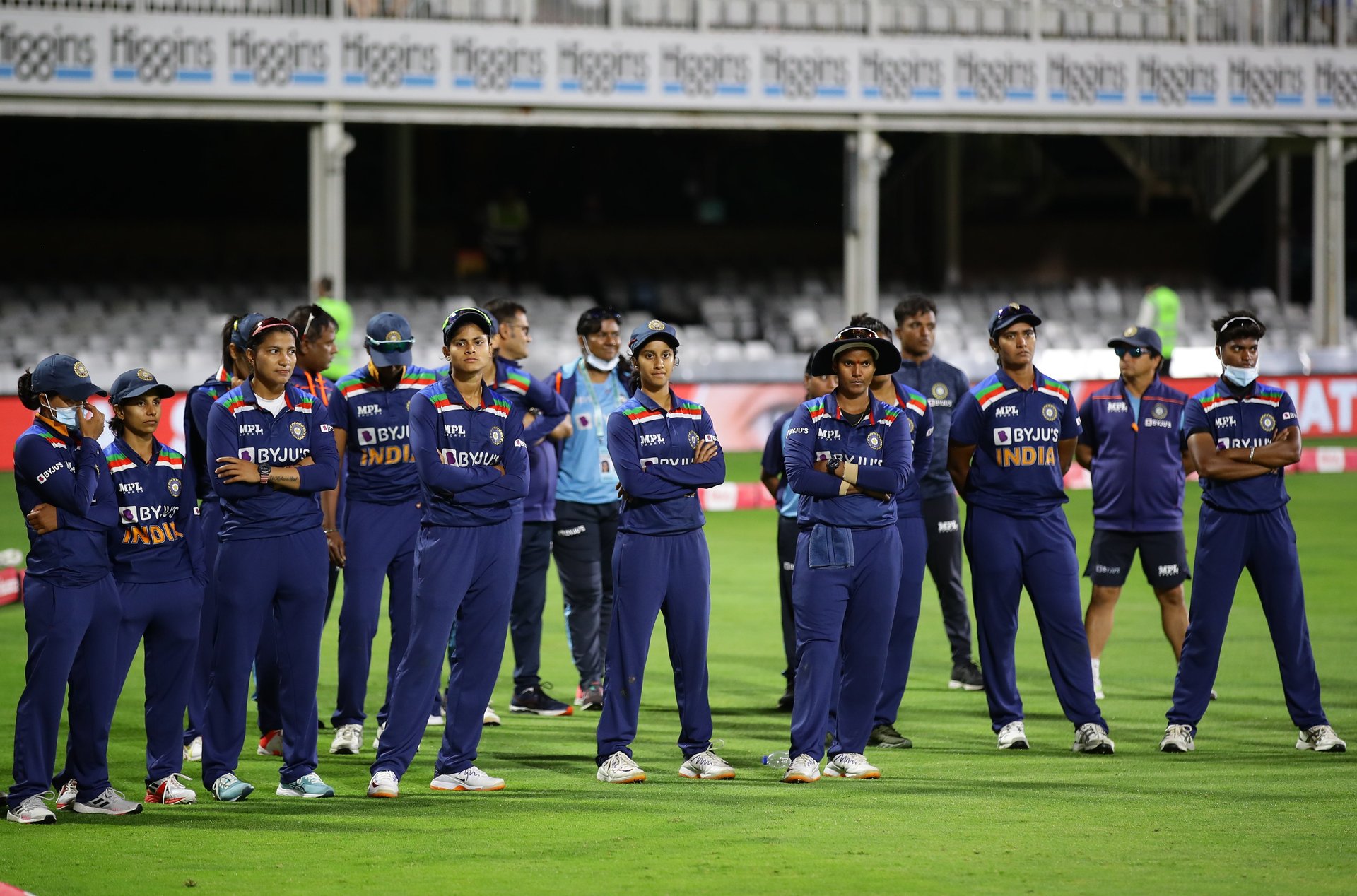India's female cricketers, who once paid to play, will now earn as much as men
However, this still doesn't translate into full pay parity.

In the early 1980s, around the time when the cricketing world’s most coveted trophy was brought home for the first time by Indian men, the country’s woman cricketers had to pay from their pockets to even join the team.
Four decades and several scintillating performances later, they have finally been deemed equal—at least in some ways—to their male counterparts.
The Board of Control for Cricket in India (BCCI) yesterday (Oct. 27) announced that both men and women contracted to play for international matches will now earn the same fees.
While the annual retainership for woman players still remains far lower than for men, it still implies an up to a six-time rise in players’ salaries. Besides, domestic match players won’t see a change in their incomes.
India woman’s team captain Harmanpreet Kaur called it a “red letter day for women’s cricket in India.”
Woman cricketers had to travel unreserved on trains
“We travelled in unreserved compartments. We could not help it, there was no money... We paid from our pockets also, but we played for passion...,” former India women’s team captain Diana Edulji, who played for India from 1976 to 1993, told the Indian Express.
Players keen on playing in the 1982 edition of the women’s World Cup in Australia were asked to pay 10,000 rupees ($1,147 at an exchange rate of Rs 9.46 per dollar). This was a time when the Women’s Cricket Association of India (WCAI) governed the sport for females. Evidently, it struggled for funds.
“By announcing this [revised pay structure], the BCCI has taken a big step in recognizing women cricketers and women’s cricket,” Edulji said.
How much will women cricketers be paid in India?
The BCCI has now revised the match fees for all forms of the game: Test, one-day internationals (ODIs), and T20. Woman players’ salaries will, as a result, increase six times for Tests and ODIs, and three times for T20s.
It still isn’t equal pay in Indian cricket
BCCI’s pay revision is applicable to only international matches. In domestic cricket, women will remain far behind men in terms of earnings.
“I hope domestic cricketers are also offered equal match fees as that way you can benefit many more cricketers,” Rangaswamy told the Hindustan Times.
Besides, the women’s collective match earnings still aren’t anywhere close to those of the male players. One reason for this is that they don’t play as many matches as the men.
For instance, in upcoming tours, the Indian women will be playing two Test matches, 27 one-day internationals (ODIs), and 36 T20 matches between 2022 and 2025. The men, on the other hand, will play 38 Tests, 42 ODIs, and 61 T20s from 2023 to 2027.
Another disparity lies within the annual retainer. The prevailing variance is apparently based on revenue-earning potentials.
“Once the women’s IPL takes off, market value will go up automatically and cricketers will be compensated more,” a BCCI official told the Hindustan Times
The board next plans to launch a women’s edition of the Indian Premier League (IPL) by 2023.